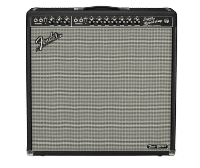
Have you heard about Fender’s newest edition to their “Tone Master” amp series? In this Fender Tone Master Review, I’ll take you through what makes their Super Reverb an amp to consider if you are looking for the big vintage 60’s “Fender blackface sound” with modern options.
Everything you need to know is right here to help you decide if this amp is the one you’ve been waiting for. Check out the amp that will give you awesome sound without breaking the bank or your back!
What Is The Tone Master Super Reverb Amp?
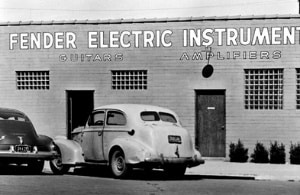
The Super Reverb is Fender’s latest Tone Master offering. It is scheduled to be released sometime in August 2021. It is currently available for pre-order online. I will update this review as additional information becomes available.
The Tone Master design uses “massive” digital processing, focused on the sole task of faithfully reproducing the sound and touch dynamics of a single model of Fender vintage all-tube amp.
In this case, a 200 Watt digital amp provides the clean power required for the DSP chip to faithfully model the original circuitry and 45 Watt power output of a 60s vintage Super Reverb. This gives it plenty of headroom and the “Fender attitude and chimes” it deserves.
Fender has taken it a step further by adding modern features like a power output selector, a balanced XLR line output with impulse response (IR) cabinet simulations, and a USB port for firmware upgrades.
The lightweight cabinet has 4 Jensen PR-10 speakers for vintage sound clarity that pair excellently with the tubeless amplifier’s output.
Fender claims that the sound and performance of their amp is “virtually indistinguishable” from their original all-tube model but at about only half the weight. Let’s not forget that back in the day, 60s combo amps like the Super Reverb and Quad Reverb were real “back-breakers” that were rolled on casters by guitarists that worshiped the “big Fender 4-speaker sound.”
Who Is The Tone Master Super Reverb For?
The Tone Master Super Reverb is for anyone that wants an amp that sounds and performs like the original but has some options that make it more versatile and adaptable.
It light enough to easily take to practice sessions or gigs. You can use the power attenuator in your bedroom or hotel room without disturbing your neighbors.
The line-out feature allows you to go directly into the house mixing board, a recording studio console, or your home digital audio workstation (DAW).
If you’re a vintage Fender-amp-sound type of guitar player, then you should take a serious look at this Super Reverb
How The Tone Master Super Reverb Works
The Tone Master Super Reverb incorporates an analog preamp input stage, which feeds a 200 Watt Class-D (digital) power amp that addresses one of 4 cores in the DSP processor.
This processor core then models the original 45 Watt vintage amp design, which gets converted back to an analog output stage.
The amp is operated by using the controls on the front and rear panels. Here is a summary of what you need to know.
The Front Panel
The Tone Master Super Reverb amp is designed with a blackface front panel that looks and functions like the original 60’s vintage model.

It gives you a normal and vibrato channel, each with two inputs, tone stack controls, and a bright switch. The vibrato channel has additional controls for middle, reverb intensity, and vibrato speed and intensity adjustments.
The Rear Panel
The rear panel has the usual power input and on/off switch, as well as controls for options that take advantage of the digital nature of this amp.

The power input automatically adjusts for 120 or 240 volts without the need for a power adaptor. There is also a mute switch, which can shut off the internal speaker when sending the audio signal through the direct out.
There are controls for the amp’s output power attenuator and balanced line out. A 1/4″ “Footswitch” jack connects the reverb and vibrato footswitch, which is included with the amp.
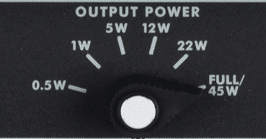
The Output Power Attenuator
The rear of the amp has a power attenuator rotary switch. It lets you select the power output (volume) you need for any given situation.
Full power gives your the full 45 Watt output, based on a simulation from the onboard 200 Watt digital amp, which provides all the headroom and dynamics of a vintage Super Reverb.
The other 5 power levels allow you to crank the amp at reduced volume levels with no appreciable difference in sound and performance.
The Balanced Line Out Controls
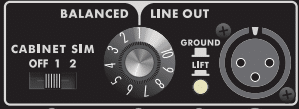
The line-out controls on the rear panel allow you to send a Balanced XLR audio signal to any suitable input, such as a mixing board or an audio interface for a laptop running recording software.
You can select from two cabinet simulations, which were modeled by sampling vintage Super Reverb amps in a recording studio.
The direct line out signal strength can be adjusted with the control knob.
There is a ground lift switch to remove unwanted noise in the signal from a faulty ground connection to the amp.
The Four-Core Digital Signal Processor (DSP) Chip
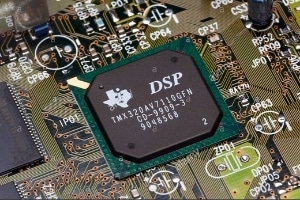
All Tone Master amps use a four-core DSP chip. Each core is assigned to a particular task to make the amp sound and react according to specific design specifications.
The four cores of the DSP are assigned to the following three functions.
- 1 core for the amplifier modeling, in this case, a Fender all-tube vintage Super Reverb
- 2 cores for the reverb simulation, using a 12-second convolution-based technology
- 1 core for the two impulse response (IR) cabinet simulations on the direct line out
To make the reverb sound as organic and close-sounding to a vintage Super Reverb as possible, the engineers at Fender needed to use two of the four available cores of the signal processor. I really salute their commitment and attention to detail!
The Four 10″ Jensen P-10R Speaker System
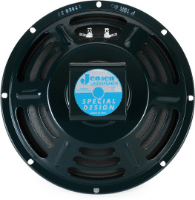
Fender went with four 10″ Jensen P-10R Speakers for the speaker design, which allowed them to help keep the amp’s weight at a minimum while getting the classic Super Reverb sound. These speakers provide the classic clean Fender chime and have a vintage-sounding break-up when pushed by the amp.
The speakers are enclosed in a combo cabinet using Meranti (imported tropical hardwood) plywood, making the amp strong but very lightweight and resonant.
Here is a video from Fender that explains how Tone Master amplifiers were conceived and designed. Be sure to watch it all the way through because it’s packed with great information about their Tone Master technology!
Tone Master Super Reverb Specifications
Here are the basic specs for the Tone Master Super Reverb amplifier.
| Item | Specification |
|---|---|
| Power | 45 Watts RMS (simulated output power) into 2 Ohms |
| Normal Channel Controls | Bright Switch, Volume, Treble, and Bass |
| Vibrato Channel Controls | Bright Switch, Volume, Treble, Middle, Bass, Reverb; Vibrato Speed, and Intensity |
| 1/4 ” Inputs | Two Normal and Two Vibrato |
| Effects | Reverb and Vibrato |
| Line Out | One Balanced XLR Line Out with 2 Cabinet Simulations, Level Control and Ground Lift |
| Jewel Light Indicator | Red (Power), Red/Amber (Warmup), Amber (Mute) |
| Speakers | Four 10″ Jensen P-10R with Alnico Magnets (total impedance 2 ohms) |
| Covering | Black Textured Vinyl |
| Handle | Molded Plastic Strap with Nickel-Plated Caps |
| Dimensions | H: 24.75″ (62.9 cm), W: 25.125″ (63.8 cm), D: 10.5″ (26.7 cm) |
| Weight | 36 lbs (16.33 kg) |

Features And Benefits
Here are some of the features and benefits that all come standard with the Super Reverb.
Reverb And Tremolo
Tone Master amps have a great-sounding reverb and tremolo! This is because the sound engineers spend a lot of time in the design phase, and the reverb simulation is handled by two of the 4 available DSP chip cores (4-core processor chip).
This creates a very organic-sounding reverb and tremolo. The digitally simulated reverb and tremolo are perhaps not quite as “dimensional and creamy sounding” as the vintage counterpart, which is tube-driven, but it’s 90% there!
Tilt-Back Stands
The amp has Tilt-back stands on the sides of the cabinet, making it true to the original Super Reverb design.
This allows the amp to be placed at an angle that makes it easier to monitor its sound in a noisy room, and it can even out the bass response in certain situations.
Multi-Color Jewel Light
The power indicator light on the front panel is a multi-color jewel light. It is beneficial because it illuminates in three different colors. Red indicates power on (normal operation), red/amber indicates warm-up mode, and amber indicates the mute (silent) mode.
Power Attenuator
The power attenuator control is one of the most useful features of the Super Reverb amp. It allows the output volume to be adjusted from the full 45 Watts all the way down to 0.5 (1/2) Watt.
The 45 Watts is surprisingly loud with tons of headroom since it’s based on a 200 Watt digital amplifier that drives this Super Reverb.
Lower power levels do not appreciably change the amp’s sound quality or response. They are great for a variety of playing and practice situations.
Direct Line Out
The direct line-out cabinet modeling uses two high-quality impulse response (IR) cabinet simulations that were modeled using a variety of vintage Super Reverb amps in a recording studio.
They can send the amp’s audio signal to a mixing board and then into the house PA system or a digital audio interface for a digital recording studio.
Mute Switch
The mute switch on the amp’s rear panel allows you to use the line-out option without having sound coming from the amp’s internal speaker. It is useful for monitoring the guitar sound coming from the speakers of a digital recording studio.
USB Port
A USB port on the amp’s back panel can download future firmware updates that can improve its sound and functionality. See the FAQ section for more info.
Amp Cover And Footswitch
An amplifier cover and a 2-button footswitch are included with the purchase of this amp. The cover is a great added extra, and the footswitch is an absolute necessity to use the amp to its full potential.
Frequently Asked Questions
Are Fender Tone Master Amps Good?
If you are looking for an amplifier that looks and sounds like the vintage amp it is modeled after with modern features and technologies to enhance its functionality; then a Tone Master amp is definitely a good choice.
Where Are Fender Tone Master Amps Manufactured?
Tone Master amps are made in China. Most Fender “assembly line” amplifiers are made in China or Mexico. Fender Custom Shop and hand-wired amps are made in the U.S.A.
What About Effects Pedals?
This 200 Watt digital amp setup gives the front end of the Super Reverb the headroom it needs to handle effects pedals of varying signal outputs. Unfortunately, this amp does not have an effects loop to place your time-based effects between your preamp and amp, like a digital delay pedal.
An effect loop is something that I think Fender should strongly consider adding, perhaps in a future version 2.0 of the amp.
For more info about effects pedals, see What Is A Guitar Stomp Box – Attractive, Little, Tantalizing; and EBII Pedalboard System Review – Simplify Your Pedal Setup!
How Do I Update My Fender Tone Master?
Tone Master amplifiers can receive firmware updates via the USB port on the back panel by connecting a USB cord to a PC or Apple computer. Then, connect online to the Fender Tone Master website and download the firmware update.
Drag and drop the firmware update into your Tone Master amp, which appears as an icon (Fender_Amp) on your computer desktop.
What I like About The Super Reverb

In addition to the features and benefits listed above, here are two things that I personally like about the Super Reverb.
They demonstrate how well-thought-out the design of construction of the Super Reverb really is.
Lightweight Design
The Super Reverb was designed to be sturdy and well-made but yet lightweight compared to its vintage counterpart. As a result, it weighs in at just 36 lbs (16.33 kg).
This was accomplished primarily by making the combo enclosure from Meranti (imported tropical hardwood) plywood, constructing a lighter than usual (but strong) chassis, and using Jensen P-10R speakers.
Anyone that has lugged around heavy musical equipment can appreciate this design consideration. It is definitely something to consider if you are getting on in age or have back issues.
Look And Function Work Together Well
The Tone Master amps are designed to appear and function (from the front of the amp) exactly like their vintage counterparts, and the Super Reverb is no exception.
The front of this amp looks exactly like a vintage Super Reverb, except for the “Tone Master” label that appears in the right lower corner of the cabinet. Remove this label, and you can easily convince Fender enthusiasts that you are playing through the all-tube reissue model.
The front panel input jacks, control knobs, and switches have the layout and function of the original amp design. This makes adjusting the amp a breeze during practice or performance.
If you have ever had the experience of adjusting a modeling amp with a zillion digital parameters and models, then you know what I mean. For example, can you remember exactly what loads when you select saved “patch 242” or trying to find the saved settings you’re looking for while the audience waits impatiently?
All the modern enhancements are placed on the rear panel so that they can be discretely adjusted whenever necessary.
This amp’s overall layout and function serve to enhance your overall experience and can easily get the seal of approval from an “old-school” guitar player.
What I Don’t Like About The Super Reverb

A Little Pricey
At a list price of $1200, this Super Reverb is not really a beginner’s amp. The price is certainly reasonable for all it can do and how well it does it, but it might be out of a lot of guitar players’ price range.
If you can wait, then there might be a price drop at some point, or you can buy the amp when it goes on sale and save 100 dollars or so.
No Headphone Jack
A headphone jack would add additional functionality to the amp. However, the good folks at Fender most likely thought it wasn’t necessary since the amp’s power output can be set to 0.5 Watt.
As a fix, you can always adapt the direct line-out signal to feed a set of good headphones and adjust the line-out volume knob as needed. Sometimes you just need to practice in complete stealth mode.
No Effects Loop
An effects loop on the rear panel of this amp would be a really good idea. Many effects sound and function better between the pre-amp and amp, such as a digital delay.
Fender claims that the amp’s front end handles all types of effects excellently. Perhaps an effects loop will become available in a future amp redesign.
Limited Reverb And Tremolo Function
This point is a little picky but valid. This Super Reverb doesn’t have the ability to use reverb or tremolo on the normal channel as the hand-wired Fender reissue amps do. So it’s ok when you realize that Fender was modeling their vintage Super Reverb.
Most players will plug into jack 1 of the vibrato channel so it’s really not a big deal.
Limited Cabinet Simulation Options
The super Reverb comes with two very high-quality cabinet simulations.
One thing that Fender could have done would be to give guitar players the ability to add additional simulations via the USB port.
I just mention it as a thought, but most players will have all that they need, and who wants to spend time tweaking technical things when you could be playing your guitar?
Limited Warranty
The Super Reverb amp comes with a 2-year factory warranty, not the standard Fender 5-year warranty that other amps may have. The amp is less likely to need adjustment or repair than a tube amp if the unit is cared for properly.
Beware Of The California Proposition 65 Warning
This so something I just thought I’d mention. The super Reverb comes with a California Proposition 65 Warning that exposure to chemicals used to manufacture the amp can potentially cause cancer, birth defects, or other reproductive harm.
Final Thoughts On The Fender Tone Master Review

The Fender Tone Master Super Reverb amp is definitely in a league of its own. Unlike some Fender multi-amp simulators, this Tone Master amp is designed to model only one thing, a vintage Super Reverb.
Do not view the Tone Master Super Reverb as a “one-trick pony” because, in reality, it’s “one amp done right.”
I have a Fender Cyber Deluxe and Mustang. I like the modeling and versatility they provide, but they can’t really compare to the modeling accuracy and simplicity of The Tone Master Super Reverb.
This amp has everything you need to combine the best of old and new amplifier technology, and it’s a frustration-free way to spend your time playing, not “adjusting.”
If you are looking for a big Fender sound in a 4-speaker combo amp that uses all the essential technology of the digital age, then I highly recommend you consider the Tone Master Super Reverb.
To see Fender’s Eugene Edwards play the 75th Anniversary Strats and Teles through a Tone Master amp, see Fender 75th Anniversary Stratocaster Review – 3 Great Looks!
Tell Me What You Think

I hope that this fender tone master super reverb review answered most of your questions about the pros and cons of this amplifier.
Please leave me a comment below if you enjoyed this article, have any questions about this product, or want to leave your own personal review. I will be happy to help you.
- Do you own a digital guitar amplifier? Which one? How do you like it?
- If not, have you ever played through a digital amp?
- As an “all-tube” amp purist, would you consider auditioning this Super Reverb?
- How likely are you to buy this amp after reading this review?
For another great amp, see Fender 68 Custom Vibro Champ Reverb Review – Astonishing!
Also, check out Carr Super Bee Review – Classic Blackface Sound On Steroids!




You really know what you are talking about here! This article is very detailed, perfect for someone who is looking for information about guitars and amps. My husband likes playing guitar and he has several of them, also Fenders. He would be interested in reading this one, I might suggest him to follow you.
Thank you very much for sharing this review about Fender Tone Master.
Maja
Hi, Maja
Thank you for your comments!
I have been playing guitar for the better part of the last 50 years, so I do have quite a bit of experience and knowledge.
I think your husband would enjoy my website, and I really appreciate your forwarding him the info!
Frank
Thank you for this. I am Just getting back into playing and so many “experienced players ” go off into the tech babble lol. You make this easy and explain in actual. “Normal speak.” I have a Fender Champion 100 watt so this would be a way better upgrade? (weight wise it would definitely lol, i play out so..)
Thank you once again “Sir Dude”
Hi, Jayme
Thank You for your comments and question!
It isn’t fair to compare the two amps head-to-head because there is a big difference in price between them. They are both digital modeling amps, but the super reverb has a very accurate super reverb sound and four speakers instead of two.
Your amp has more power (100 Watts vs. 45 Watts for the Super Reverb) and more onboard effects, but you can easily make up the difference with pedals.
The thing about the lower power of the Super Reverb is that you can open up the amp in a low-volume environment (like bedroom practice) and still really move a lot of air with the 4 speakers!
The weights of the two amps are approximately the same: 40 lbs for the Champion 100 and 36 lbs for the Super Reverb.
I hope this helps, and keep on playing!
Frank
Your site is incredibly detailed. You have really done your research on a product that has yet to release. Judging from your review I am assuming it’s more tailored to someone who knows what they are doing and dealing with. Is there any reason that you might recommend this to someone who is just starting out?
Hi, Jason
Thank You for your comments!
Yes, I did get rather technical, but that does not mean that this amplifier is too complicated for someone just starting out. From the point of view of the guitar player, this amp is super easy and intuitive to use. It would be identical to playing through an all-tube vintage Fender Super Reverb, with some additional digital options like the power attenuator on the back panel.
What it really comes down to is this. If you are looking for a big (4-speaker) Fender vintage sound and you have the money to spend, then you should audition this amp when it arrives at your local music store. Then, just plug in, turn a few knobs to get your sound, and away you go! 😊
If you have any other questions, please don’t hesitate to ask, and I hope you will come back to visit my site often. Lots of new articles will be getting posted on an ongoing basis!
Hello thank you very interesting article. Having heard this amp a number of times online I understand that there is absolutely no comparison to the Mustang. However, interestingly you also mentioned the Cyber Deluxe, one of the 1st ever modeling amps, and I would really love to know how does a 1st gen Cyber modeling amp compare to a mustang in terms of tube like tone. Thx
Hi Sam
Thank you for your comment!
I used to own a Fender Cyber Deluxe, and I wasn’t thrilled with many of the amp simulations. However, the newest generation of Mustang amp has more accurate, dynamically responsive, and organic-sounding simulations than the Cyber Deluxe, which was an initial attempt by Fender at this type of technology.
The Mustang amp does a good job of simulating various amps, but if you can live with a one-amp sim, you should play through both the Fender Tone Master Deluxe and Super Reverb. I think you will be impressed. Obviously, nothing is as good as the original vintage-model all-tube amp.
Frank
Cheers Frank, thanks for your reply, yeah I have a Cyber Deluxe packed away, haven’t used for years complete with that very large foot controller, was wondering if I should go and get it all out… but crazy cos for the price when it came out, I should have got myself a good tube and it would probably be sitting next to me now. In any case I mostly play alone now and use a multi fx device to get some clean & OD Fenderish amps tones and reverbs, the modeling pedals you find today are very good for the price but obviously very far from the Tone Master or the real deal
Sam
Hi Sam,
I agree with you. There’s nothing like an all-tube amp, especially a vintage one! The Fender Tone Master amps are a great choice if you want to spend less money and need something that is significantly lighter weight than the real thing.
A good multi-effects pedal or amp modeler plugged into a great amp will get you tons of sounds. The downside is that if you’re not careful, you can spend more time turning knobs to create effects and modeling patches than you spend actually playing your guitar. This happened to me several years ago when I was doing quite a bit of digital recording, but I finally got back to basics.
Frank